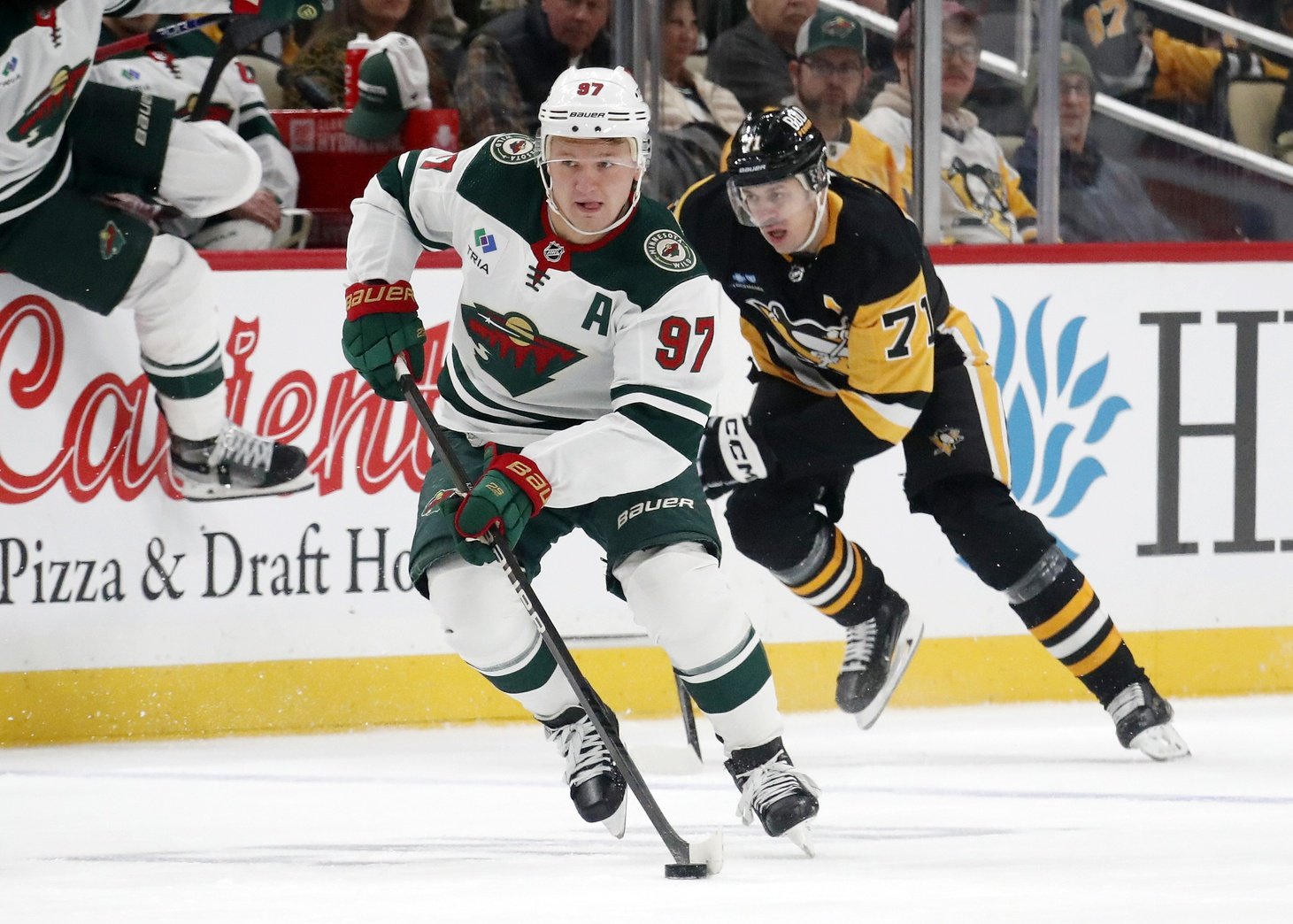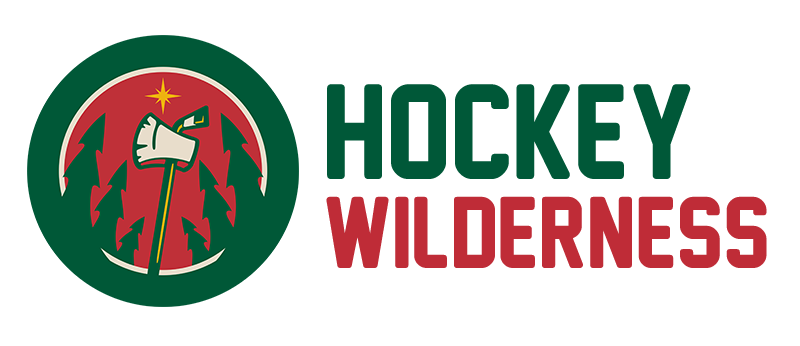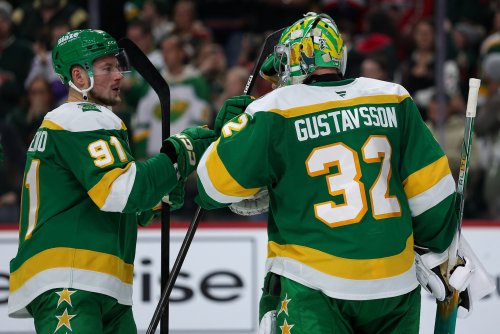
Kirill Kaprizov worked out with Evgeni Malkin in the offseason, which is both fitting and endearing. Kaprizov, 28, the small-town cherub from Novokuznetsk in the Oblast, learning from Malkin, 39, the wily veteran from Magnitogorsk. Even someone with a steely-cold heart has to love that.
A month later, Kaprizov signed a record-breaking eight-year, $136 million extension that will keep him in Minnesota through his age-36 season. Who better to learn from than his fellow countryman, a player who had 27 goals and 83 points in his age-36 season?
Malkin’s father, Vladimir, worked for Magnitogorsk Iron and Steel Works, the largest such company in Russia, and his hometown’s dominant industry. Malkin grew up playing in the Metallurg Magnitogorsk program; Kaprizov played for Metallurg Novokuznetsk as a youth.
They spent the summer working out together, iron sharpening iron. Then, Kaprizov and Malkin went their separate ways. Malkin went back to Pittsburgh, the (American) Steel City, where he won three Stanley Cups as a 1B to Sidney Crosby's 1A. Meanwhile, Kaprizov returned to St. Paul, where he became the league’s highest-paid superstar in a city that hasn’t won a championship since the North Stars were in town.
Crosby and Malkin teamed up with Kris Letang and Marc-Andre Fleury to win three Stanley Cups. A 38-year-old Bill Guerin won the first one with them in 2009, then the quadrumvirate won back-to-back titles in 2016 and 2017.
Most modern champions have followed the same formula. They have two star forwards, a dynamic defenseman (or two), and enough goaltending to carry them through the playoffs.
The Chicago Blackhawks had Patrick Kane and Jonathan Toews, as well as the dynamic Duncan Keith-Brent Seabrook pairing. They got sufficient goaltending from Antti Niemi and Cristobal Huet in their first run, and Corey Crawford in their latter two.
The Los Angeles Kings had Anze Kopitar, Dustin Brown, Drew Doughty, and Jonathan Quick. The Tampa Bay Lightning? Steven Stamkos, Nikita Kucherov/Brayden Point, Victor Hedman, and Andrei Vasilevskiy.
You probably don’t need me to tell you that a championship team needs a star player, a complementary forward, a dynamic defenseman, and reliable goaltending to win a Stanley Cup. You’re also probably aware that Chicago, Pittsburgh, and LA tanked to create their dynasties.
Recently, roster-building methods have changed. The Colorado Avalanche drafted well, while the Vegas Golden Knights cleaned up in the expansion draft, and the Florida Panthers hustled the NHL’s poorly run teams.
Still, however they got there, the method proved true. A single franchise player can’t win a Stanley Cup, even on a well-built team. Therein lies the problem for the Minnesota Wild.
Kaprizov is a star in need of a proven secondary scorer, a dynamic defenseman, and quality goaltending. In a league where star players take less to play on winning teams, Kaprizov wrung every last dollar in his negotiations with the Wild.
There’s nothing inherently wrong with that. We all only earn what we have the leverage to negotiate. The Wild needed Kaprizov more than Kaprizov needs the Wild. Any team with cap space would sign or trade for him the moment he became available. Meanwhile, without Kaprizov, Minnesota is what it’s been recently: a team that’s good enough to make the playoffs that can’t advance once they’re there.
However, Kaprizov needs a Malkin, a Letang, and good goaltending to complement Kaprizov if he’s going to win a championship in Minnesota. Those are three big ifs, which is likely why he secured as much money as possible. If he never wins a championship with the Wild, he’ll have enough money to buy a steel mill or two, build a large mug for himself, and sip on it while he compounds his millions.
There’s still hope for a championship parade along West 7th. It just requires a lot to break the Wild’s way.
Matt Boldy could become Minnesota’s Malkin. Perhaps Danila Yurov, who played for Metallurg before joining the Wild, can form a dynamic Russian duo with Kaprizov. Maybe Zeev Buium is Letang. You could probably squint and see Brock Faber in a Brent Seabrook. Minnesota has already messed with Jesper Wallstedt’s development, but they probably need him to become a 1A to Filip Gustavsson’s 1B because of the latter's inconsistency in net.
The Wild could also trade for a star, but that would require giving up on a significant prospect and high draft picks. Guerin has also had mixed results with trades. For every Faber trade, there’s the Calen Addison fiasco. We still don’t know if the David Jiricek blockbuster will work out. Guerin hasn't been able to deliver on a star acquisition, either at the trade deadline or this summer, which casts uncertainty on his ability to gear up for a playoff run this year.
Why would Kaprizov take a hometown discount with that much up in the air?
Still, the Wild have their franchise player extended long term. Now, they need to hope that their strategy of maintaining a first-round playoff team instead of tanking pays off. Because if the closest Kaprizov gets to a player like Malkin is in offseason workouts, this team isn’t winning a championship, even with his considerable star power.
Think you could write a story like this? Hockey Wilderness wants you to develop your voice, find an audience, and we'll pay you to do it. Just fill out this form.








Recommended Comments
Join the conversation
You can post now and register later. If you have an account, sign in now to post with your account.
Note: Your post will require moderator approval before it will be visible.